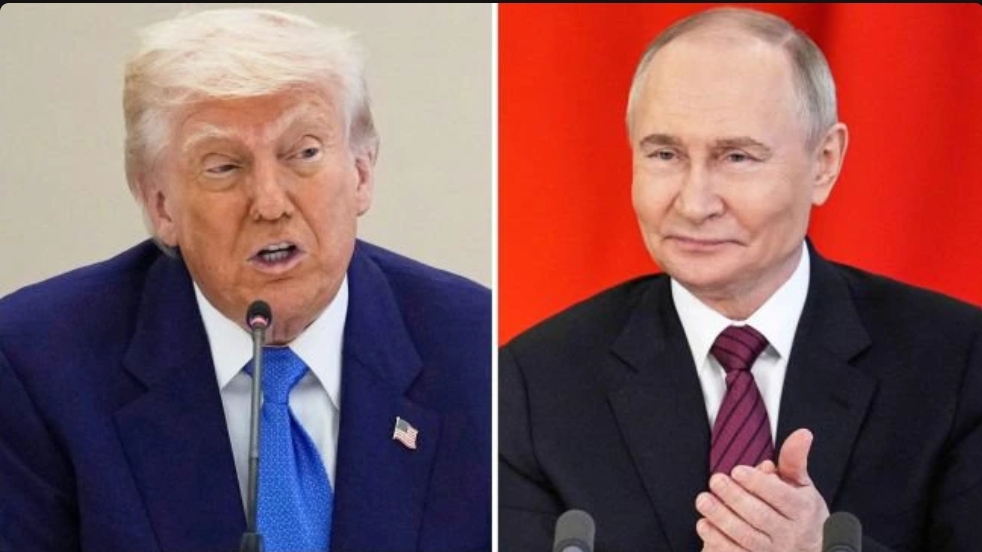Trump has a Russia problem, and there is no easy way out

Putin appears unmoved in the face of Trump’s deadline diplomacy and social media brinkmanship
The muddled US-Russia equation under Trump is symptomatic of a larger leadership dilemma.
US President Donald Trump faces a daunting series of foreign policy tests, perhaps none more confounding than the Russia-Ukraine conflict. His presidency, long known for dramatic reversals, instinctive deal-making, and headline-grabbing proclamations, appears to have hit a wall when it comes to charting a coherent course in the Ukraine war. As this crisis festers, Trump’s inability to shape outcomes in other theatres of conflict such as Gaza has also become more visible. Most worryingly, the United States’ long-term vision for its strategic competition with China is floundering in ambiguity, pushing allies, partners, and friends into a space of deep uncertainty, all without an endgame in sight.
The muddled US-Russia equation under Trump is symptomatic of a larger leadership dilemma. Trump finds himself at perhaps the most consequential foreign policy crossroads of his career: Whether to antagonise Vladimir Putin, a strongman he has long claimed to understand, or face mounting criticism from domestic and international quarters for inaction and inconsistency. This quandary is complicated by the fact that a full-blown US-Russia confrontation is neither desirable nor politically expedient, especially with Trump’s stated ambition to de-escalate global conflicts and refocus American strength inward.
Over the past several months, Trump has deployed every tactic in his political playbook in an attempt to find a breakthrough in Ukraine; placating Moscow, hedging bets, arm-twisting Kyiv and European capitals alike, threatening to pull back from the transatlantic alliance, and even halting military aid to Ukraine temporarily. These manoeuvres were followed by a dramatic pivot when Trump issued a deadline for Russia to come to the negotiating table and end the war, first suggesting 50 days, only to later shorten it to 10–12 days. These shifting timelines reflect growing frustration within Washington’s political corridors and a lack of strategic consistency.
However, responses from Moscow suggest that Putin is in no hurry. Far from being threatened by Trump’s deadline diplomacy and social media brinkmanship, the Kremlin appears unmoved. For Putin, negotiations will only begin when Russia’s “military objectives” are met, a message Moscow has delivered repeatedly. The optics of Trump pushing for a Nobel Peace Prize while issuing ultimatums to a nuclear-armed adversary only underscore the gap between ambition and reality. What began as a distant concern has now become a looming crisis for Trump. With Ukraine expressing readiness for direct leader-level negotiations after months of failed lower-level talks, Trump finds himself out of options. His own Republican Party, led by hawkish figures like Lindsey Graham, is pressing him harder than ever to show leadership and decisiveness. The days of blaming Ukraine or freezing aid as a tactic are effectively over.
In response, Trump has escalated his posture toward Russia, even going so far as to authorise the movement of a US nuclear submarine to waters closer to Eastern Europe. His administration is also contemplating secondary sanctions of unprecedented severity on countries that continue to purchase Russian energy, like China, India, and Turkey. Additionally, Trump is now pushing European nations to increase military-industrial cooperation with the United States by purchasing and supplying more arms to Ukraine. But such hardline tactics risk backfiring. Putin, who has long resisted deadlines or threats, is unlikely to respond positively to coercion. Any further escalation by Washington could provoke retaliatory steps from Moscow, possibly even in domains beyond Ukraine. Moreover, Trump’s style of diplomacy, which is public, transactional, and often lacking nuance is unlikely to move the needle with a Russian leadership that prefers closed-door bargaining over media dramatics.
The implications stretch far beyond Ukraine. By threatening secondary sanctions on energy transactions, the Trump administration is risking a widening rift between the West and the so-called “Rest”. India, which imports a significant portion of its crude from Russia, could be forced to redraw its energy map which would not only be politically contentious but also economically destabilising. Similar pressures on multilateral arrangements like BRICS+ would likely lead to a further fracture of global alliances and fuel the rise of alternative axes.
Studies have already warned that sweeping sanctions on Russian energy could eliminate millions of barrels of crude oil daily from the global market. The resulting disruption would have far-reaching consequences not just for oil prices but for the delicate economic recoveries underway in countries across the Global South. In such an environment, Brazil, Canada, and Mexico — already smarting from Trump’s steep tariffs — are beginning to reposition themselves economically and diplomatically, seeking trade diversification and lessened dependency on the US market.
Layered atop this turbulence is the Indo-Pacific question. The US under Trump has continued to project rhetorical support for a “free and open Indo-Pacific,” but the strategic foundation of that promise is cracking. Washington’s increasingly transactional posture, coupled with its lack of security guarantees, is prompting regional partners like India to rethink the reliability of American commitment. Even as Washington nudges India to do more within the Quad to shape its security dimensions, American assurances remain vague. The credibility gap is widening. India, Japan, and Australia are left wondering whether the US would truly back them in the face of a regional contingency, particularly when Trump’s strategic competition with China seems to shift based on economic calculations and domestic political considerations.
Over the past few weeks, Trump’s handling of Taiwan only underscored these concerns. After extracting major investment promises from Taipei, Trump reportedly denied permission for the Taiwanese Premier to land in Washington under Chinese pressure. It reveals the precarious balancing act Trump has placed himself in by talking tough against China at home, but pliability when Beijing flexes its muscles diplomatically. This duality risks boxing the US into a corner. Without a coherent strategy or clear red lines in Asia, Trump’s administration risks creating a strategic vacuum that China could exploit. And without trusted assurances from the US, many in the Indo-Pacific may start seeking alternative security arrangements or intensify a hedging strategy, undermining decades of American strategic positioning in the region. In the absence of a clear endgame, Trump may find that he is not shaping world events but is instead being shaped by them









0 Comments